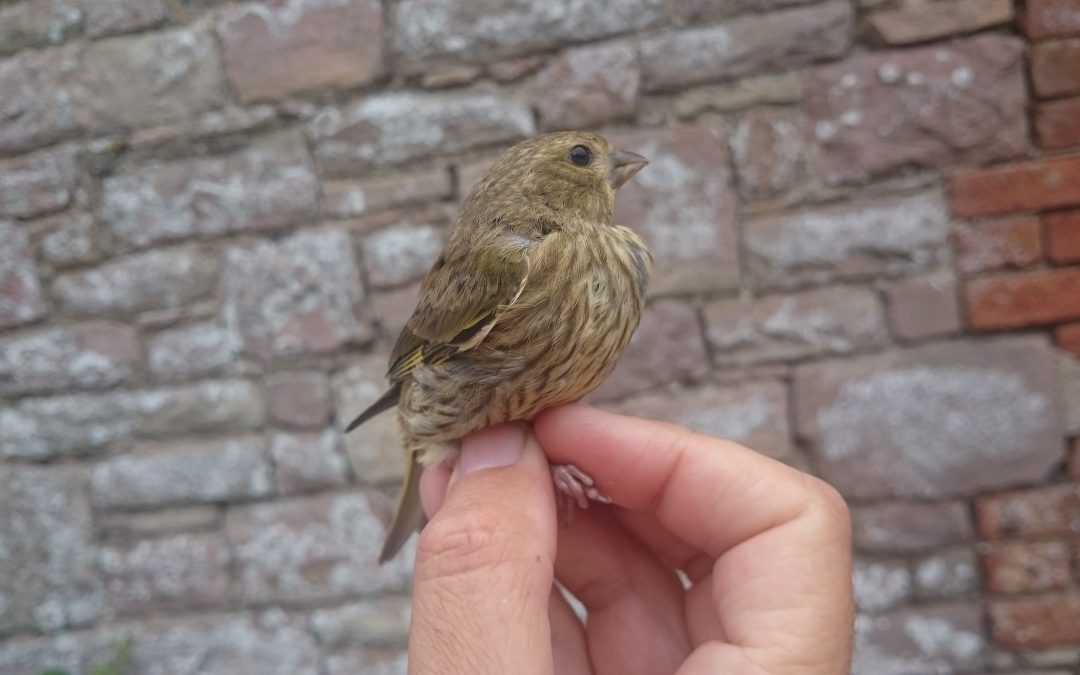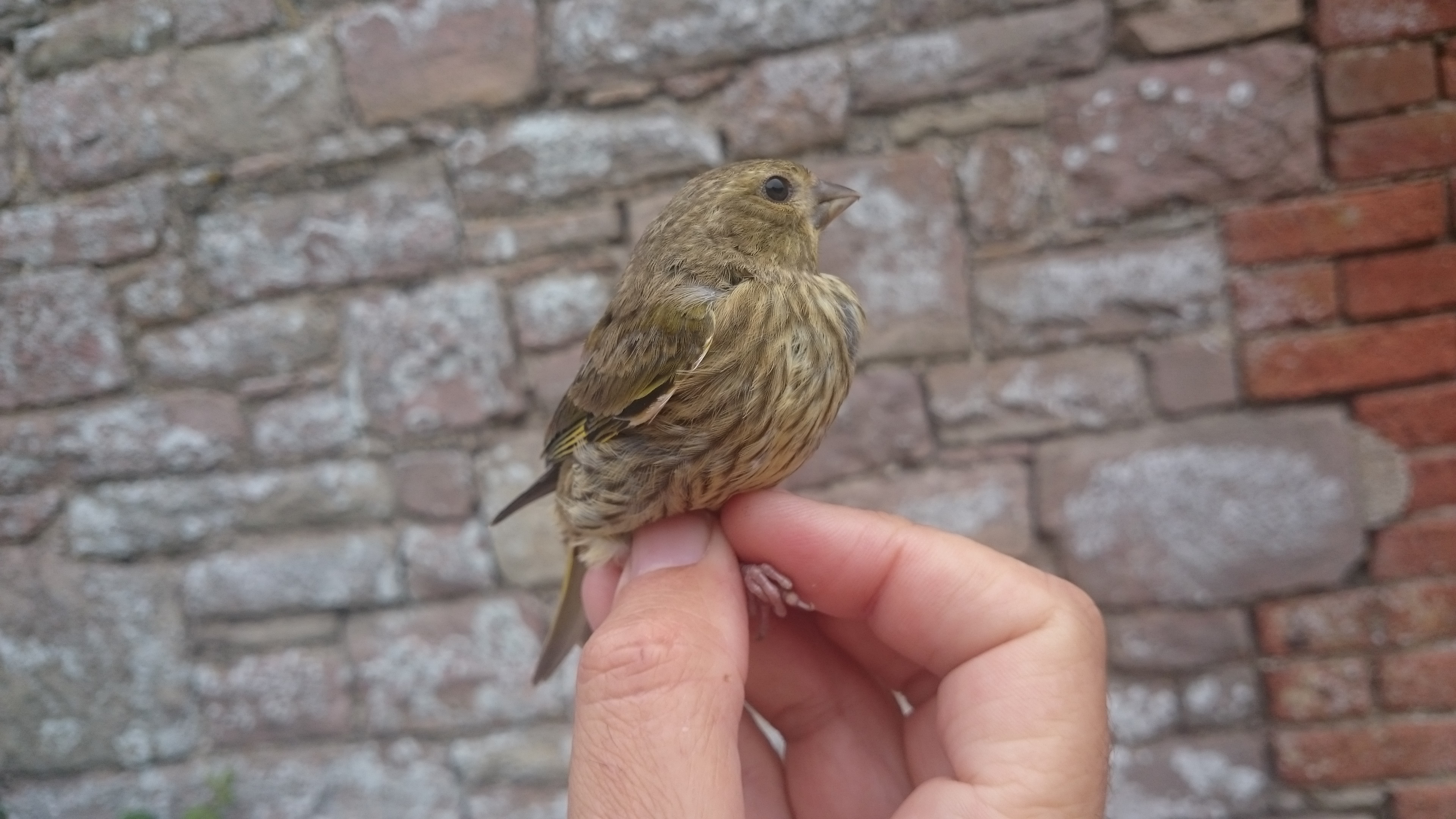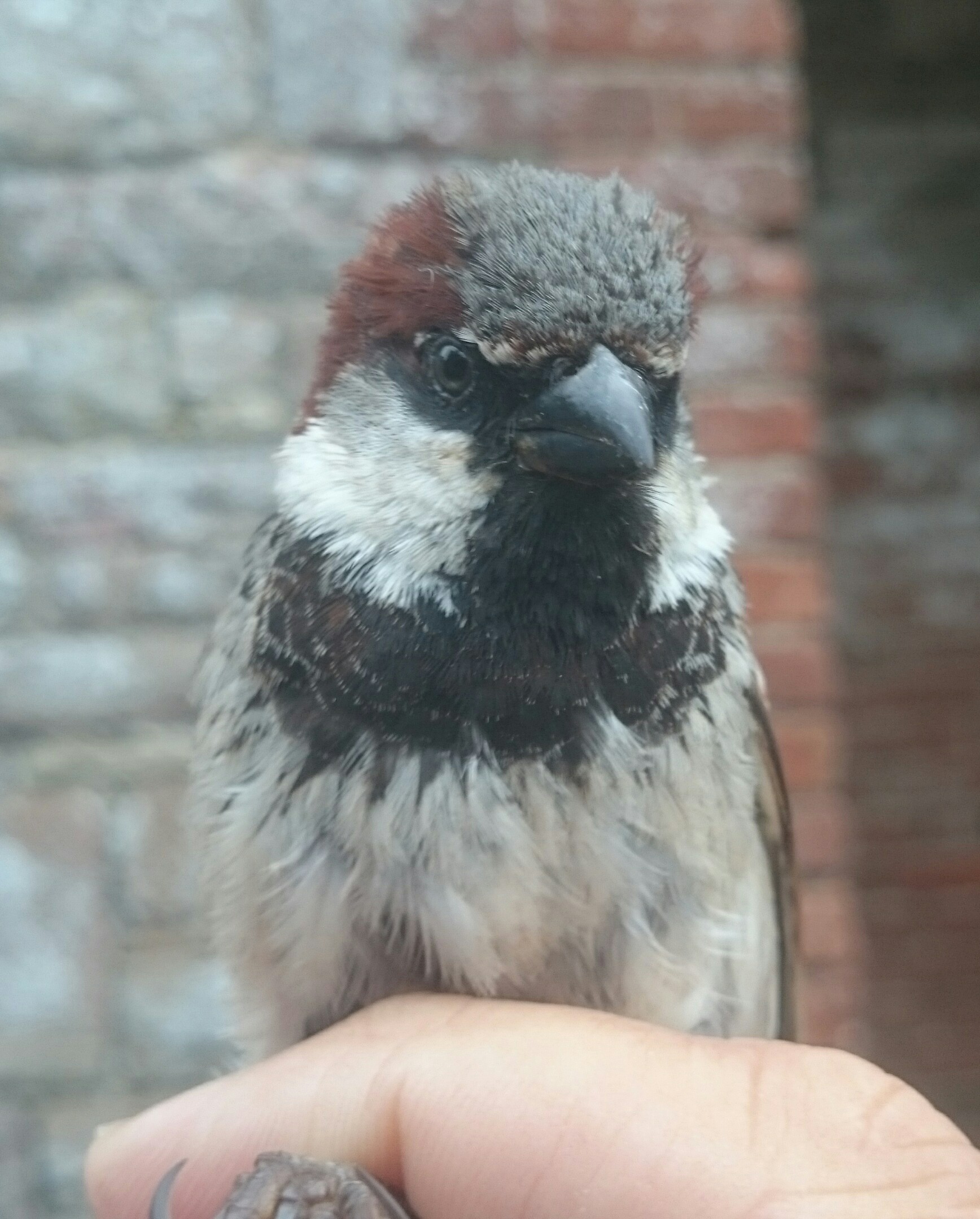
June 5th
Very light NW winds today. Ringing produced more evidence of local breeding bird success, the juvenile Greenfinch below I suspect one of many we will see this summer given the substantial suitable nesting habitat here for this species.

Greenfinch – Essex Farm – Recently fledged

House Sparrow – Obs Garden
Many years ago I saw a television documentary on House Sparrows. A long-standing study had identified that the size of the black bib on the bird indicated the age of the males (larger bib older bird). The researchers had identified different individuals in a colony by giving each male a military rank according to bib size (large bib the Colonel small bib a private etc ) A few years back I was lucky enough to have a very large local population regularly visiting my garden and ringed about 200 over a year. In the Autumn after both juveniles and adults had completed a full moult (rendering them impossible to age according the ringers bible) I felt that it was fairly easy to see by the size of the black bib which birds were adults post moult and which were juveniles. Further, the rich brown on the lesser, median coverts and greater coverts of the adults was a far richer chestnut on the moulted adults than on what I took to be the juvenile counterparts. As a good number of the birds I was processing in the Autumn were birds I had caught pre moult, I felt this a reasonably safe bet ageing first year House Sparrows post moult. I would be delighted to hear anyone else’s theories.
